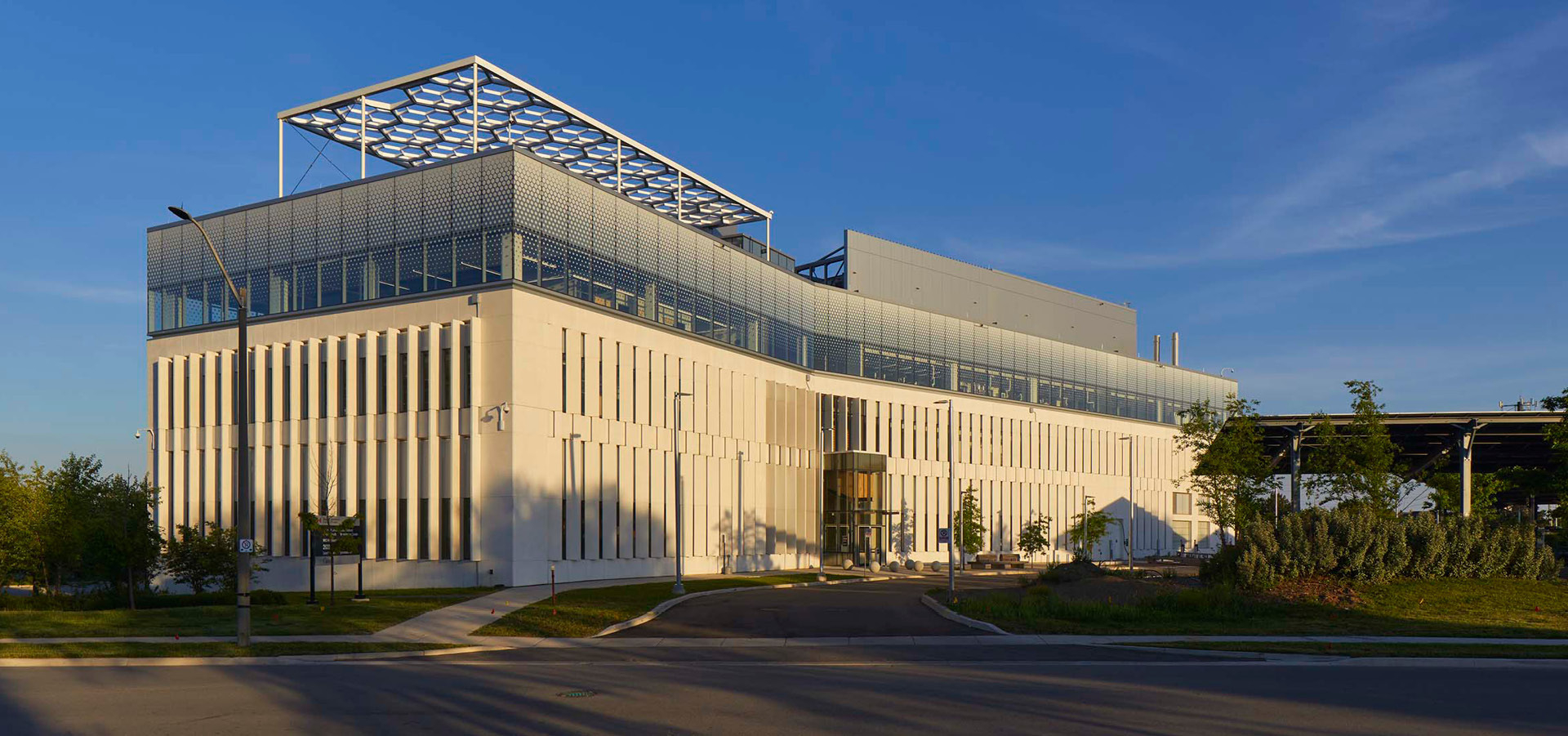October 31, 2024
The Laboratories Canada strategy represent a groundbreaking initiative by the federal government, aimed at modernizing and enhancing science facilities across the nation. This ambitious program is designed to place Canada at the forefront of breakthrough research and cutting-edge discoveries, driving economic growth and innovation. A key component of this initiative is the transformation of the Advanced Materials Research Facility, which has undergone significant upgrades and expansions.
The Canada FIRST Joint Venture, a collaboration between Architecture49, HOK, and WSP, assembled world-class experts in laboratory planning, building design, engineering, and sustainability to deliver this first built project of the Laboratories Canada program. This collaborative effort underscores the commitment to creating state-of-the-art facilities that support advanced scientific research and development.
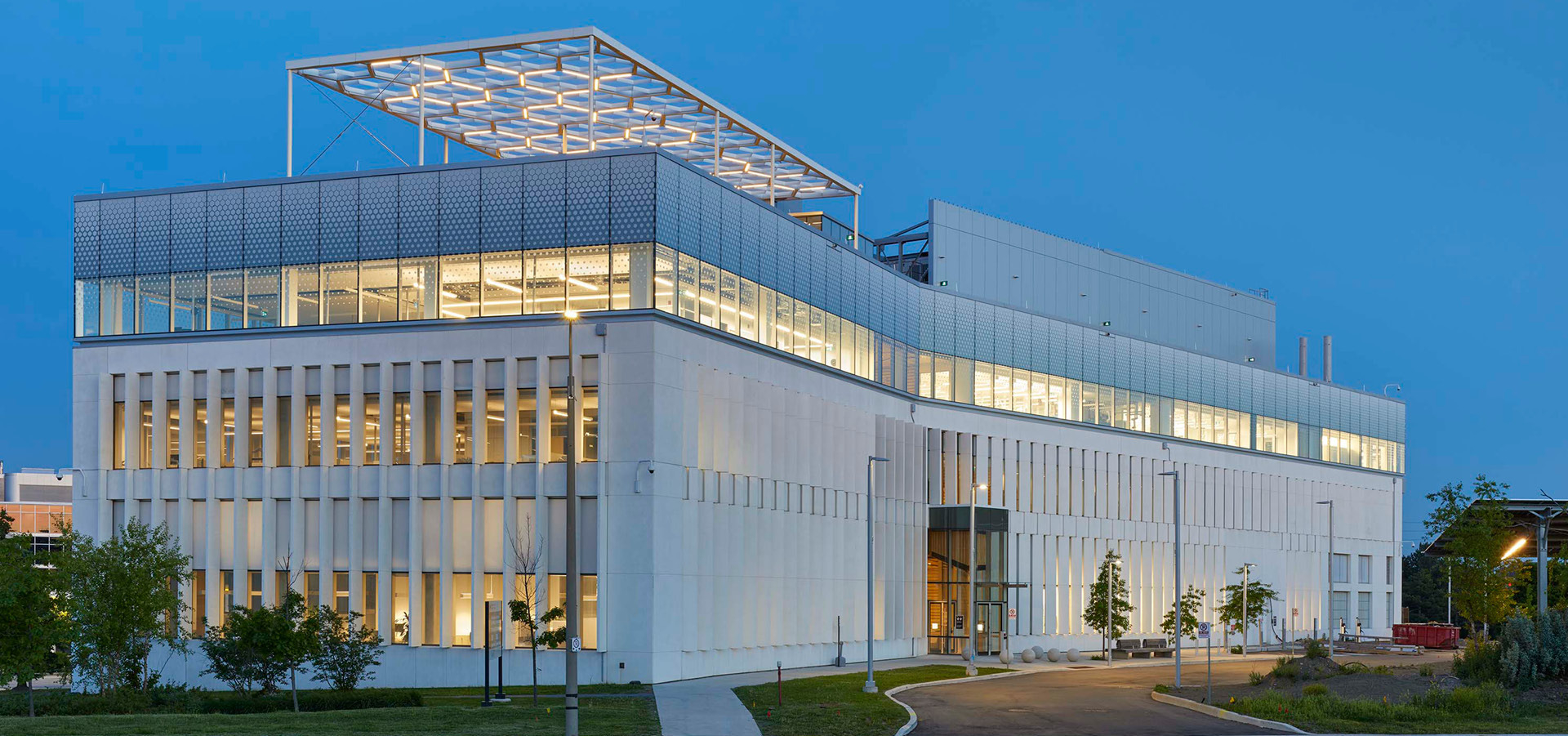
BUILDING DESIGN
The design of the facility was guided by a set of principles established during the planning stages: collaboration, innovation, modernization, environmental sustainability, and universal design. These guiding principles were critical in evaluating the qualitative and quantitative aspects of every design decision. Within the renovated building, a diverse range of spaces cater to the varied needs of its occupants. Administrative areas, researcher offices, wet chemistry labs, and research zones dedicated to material acceleration platforms are seamlessly integrated. The inclusion of clean room environments ensures that precise and controlled work on sensitive materials can be conducted effectively.The project was not only an addition to an existing structure; it required a comprehensive rethinking of space utilization for scientific activities. The goal was to establish strong visual and physical connections that would inspire scientific inquiry and enable seamless collaboration. As Shrey Chandra, Senior Laboratory Planner at HOK describes it, “This facility goes beyond a building; it is an environment designed to nurture scientific work and allow innovative design to thrive over time.” The introduction of glass partitions creates a bright open lab environment affording researchers views through the lab's connecting to nature, social spaces and other researchers.
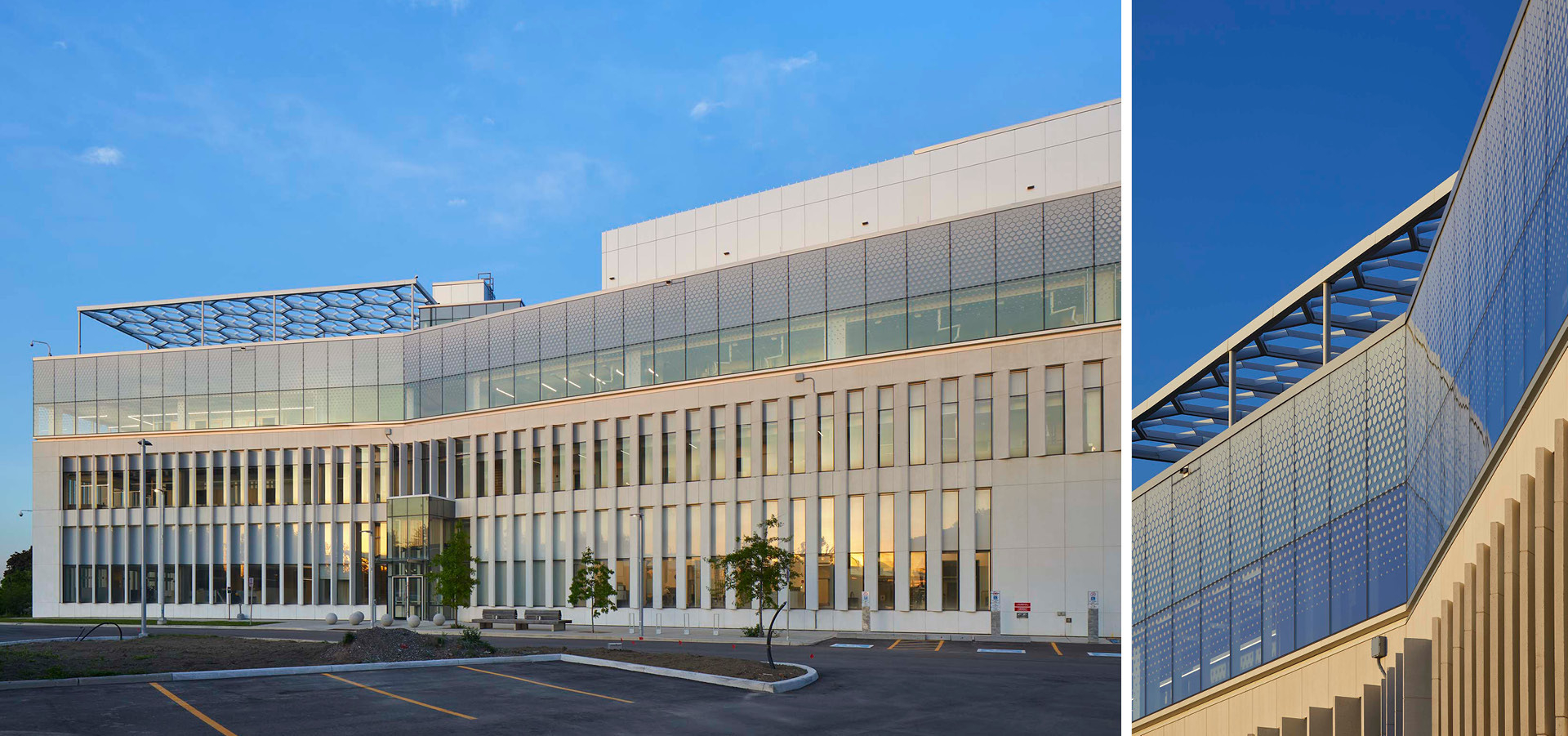
The opportunity for connection was built into the design of the main feature stair, which spans all three floors and incorporates extra-large landings to create spaces for organic interaction. Strategically positioned between offices and laboratories, the stair serves as both a social hub and a vital conduit for movement. It fosters interaction and collaboration among scientists and administrative staff, encouraging a dynamic, interconnected work environment.
Furthermore, the central staircase leads to a new rooftop amenity space that serves as a sanctuary for staff, providing respite from the rigors of office and laboratory work. It is designed to accommodate a variety of functions, from informal meetings to special events and workshops. The custom- designed trellis is shaped in a hexagonal pattern to mimic carbon chain diagrams, and is outfitted with custom lighting to enable evening events. The terrace provides spectacular views of the lake and the city skyline, while incorporating wood decking and a green roof, which bring life and seasonal colors, while creating the feel of a backyard barbeque.
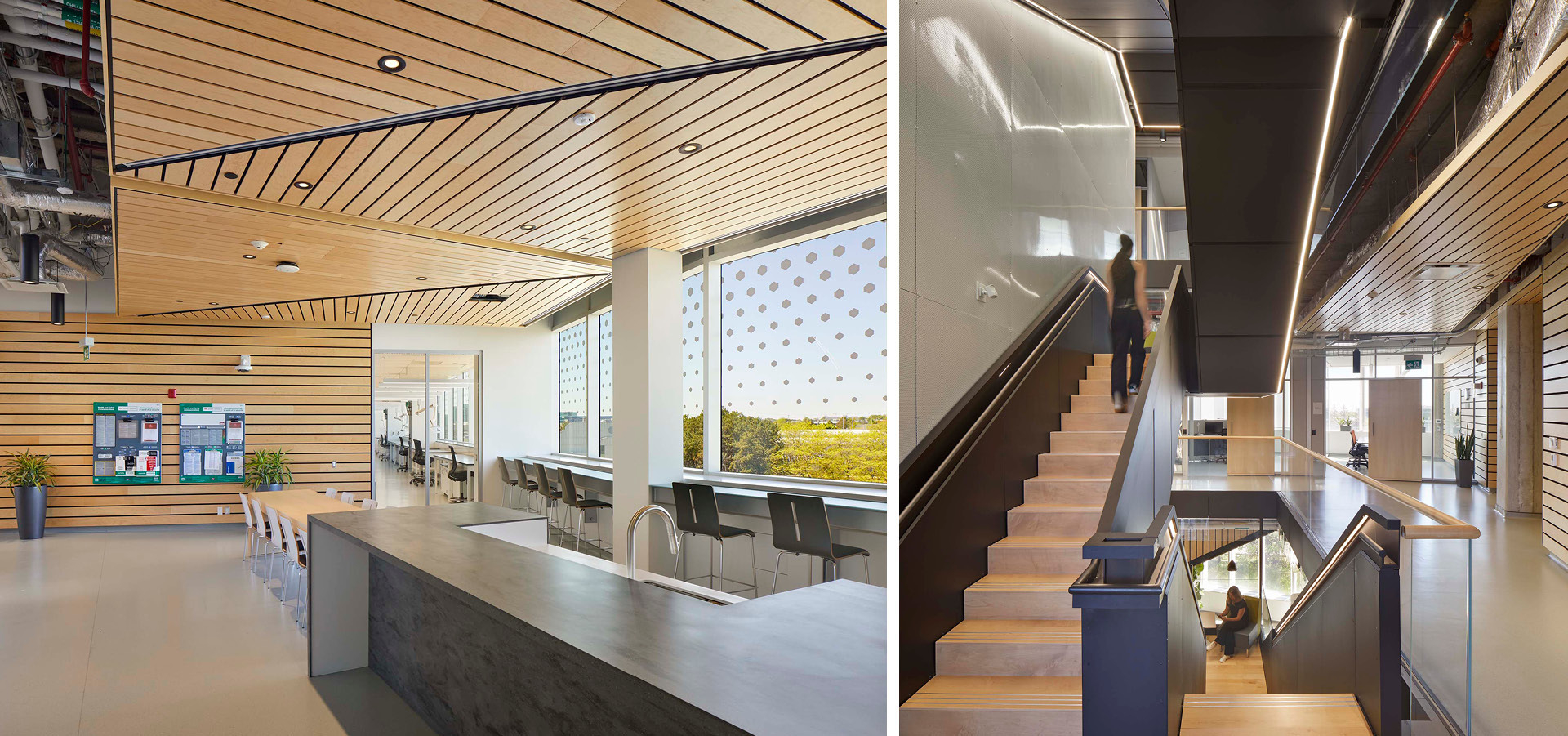
Central to the building’s transformation was the fitting up of an empty second floor, the addition of a third floor, and expanding the mechanical penthouse by an additional storey. Achieving this required meticulous strategic planning and project management, particularly in clearing the existing roof of large building systems equipment and old roofing materials. Additionally, vertical extension of existing stairs and shafts was necessary to support the expansion. The phased approach was crucial, considering the complexity of reinstating building systems such as strobic exhaust fans on the new roof, while ensuring uninterrupted service and a safe working environment for scientists on the first floor.

THE LABORATORY SPACES
As a centre for advanced material research originally dedicated to the National Research Council (NRC), the facility has expanded to also house Natural Resources Canada (NRCan) alongside other academic and industrial partners. Central to this initiative are the Material Acceleration Platform (MAP), a groundbreaking automated systems designed to expedite the discovery of new materials and processes. These platforms will drive advancements in various industrial sectors, including clean energy and transportation, positioning the facility at the forefront of technological innovation.
The second floor of the building serves as the epicenter of material innovation, featuring state-of-the-art MAPs. Driven by AI, these robotic systems enable real-time sequencing and accelerated testing of novel alloys, minimizing human intervention and revolutionizing the pace of material discovery. Additionally, the facility includes sophisticated wet chemistry spaces for chemical analysis and reactive material production, along with clean room environments for precise and controlled experimentation. As described by Shrey, “this building stands as a testament to the fusion of thoughtful design and scientific purpose. It is a place where the brightest minds converge, where collaboration is a daily practice, and where the future of science is continually being shaped.”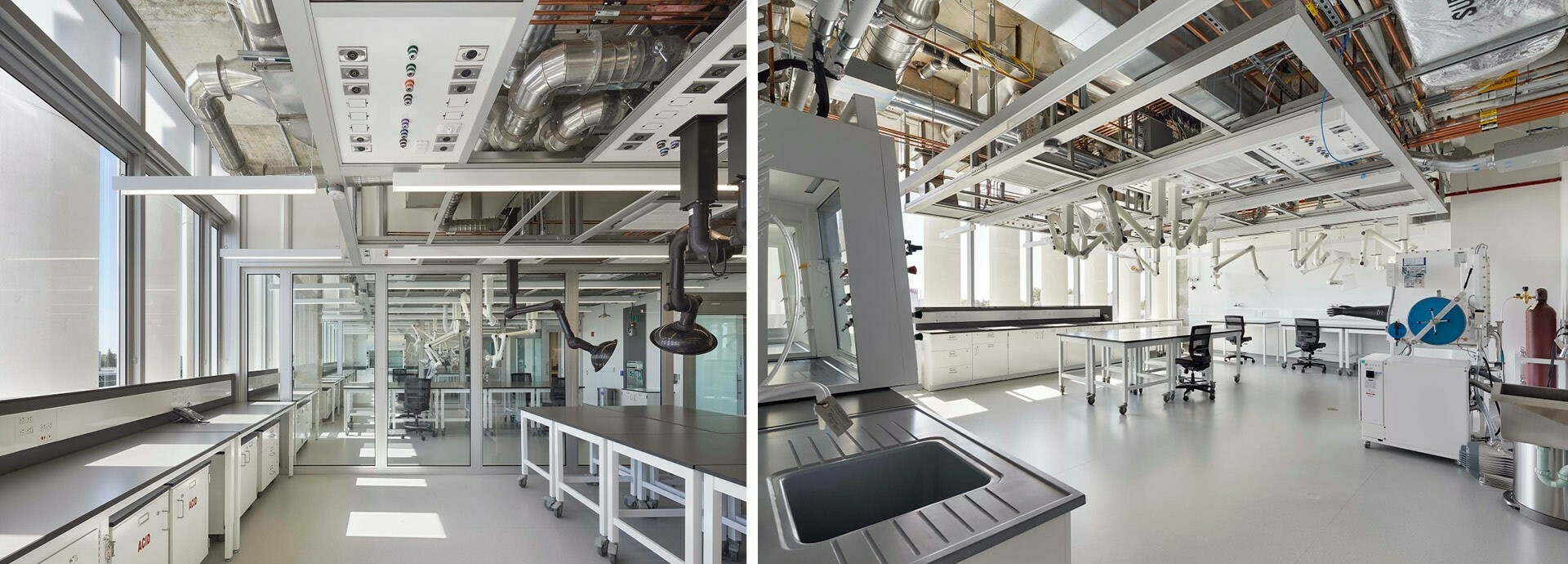
A key aspect of the project is its emphasis on flexible laboratory and administrative space design. The laboratory areas are configured with modularity in mind, allowing for horizontal expansion. Demountable walls within the MAP research space offer the flexibility for labs to seamlessly expand. A custom-designed laboratory solution integrates wall systems and overhead service carriers to facilitate plug-and-play reconfiguration of lab casework. Ceiling service panels enable complete reconfiguration of lab casework without disrupting electrical or plumbing services, ensuring adaptability to evolving research needs.
The second floor features a neighbourhood of flexible lab spaces specifically designed to support MAPs. There are eight different spaces, each tailored for various chemistry modalities such as organics, inorganics, high hazard, and high temperature chemistry. These labs are designed for a range of automation. They can function as independent units or integrate into a larger open space with an integrated MAP, operating as a self-driving lab. The design incorporates flexible lab partition systems, adaptable and mobile lab furniture, and versatile ceiling systems that deliver utilities from the top, ensuring the labs can easily adapt to various research needs and configurations.
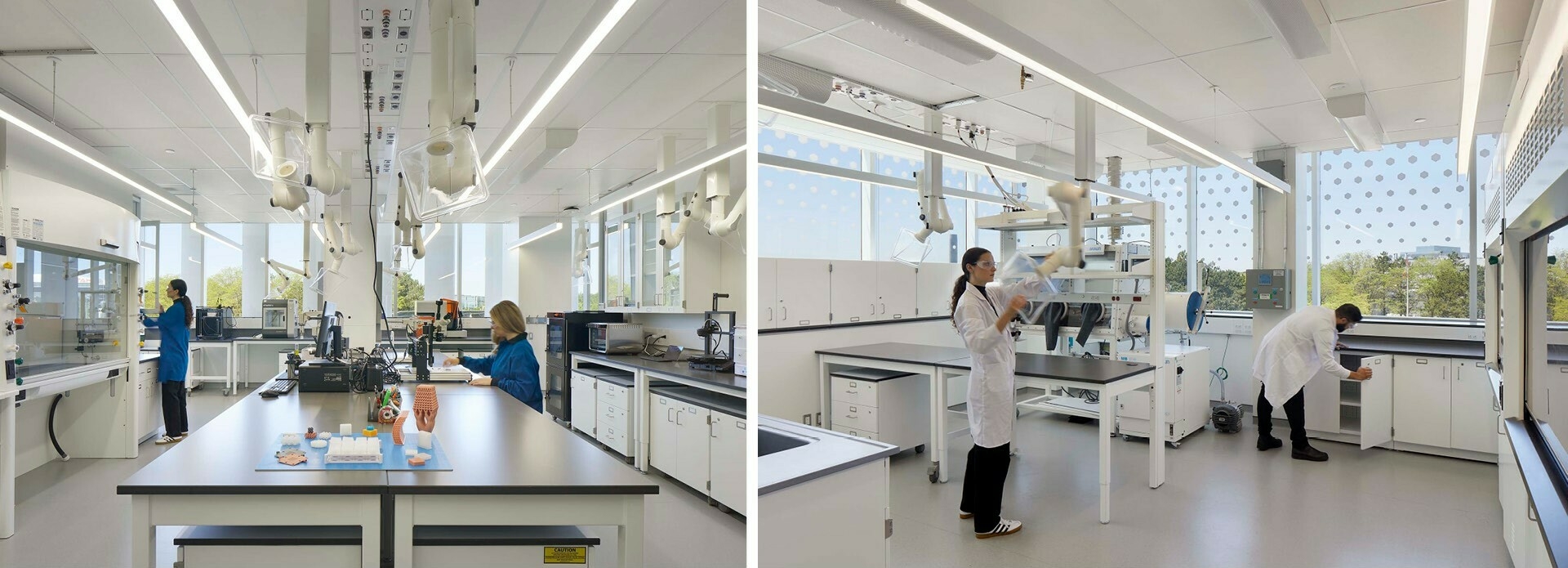
SUSTAINABILITY
The Advanced Materials Research Facility exemplifies the Laboratories Canada program’s commitment to environmental responsibility. Aiming for LEED Gold certification, the project pioneers a zero-carbon solution by transitioning to operations free from carbon-based fuels, targeting net-zero carbon emissions through reliance on electricity alone.
A key component of our sustainability strategy is the geothermal system installed in the parking lot. This system harnesses the earth's natural heat exchange, heating the building in winter and cooling it in summer, thereby significantly reducing energy consumption and emissions. Additionally, solar photovoltaic panels on the roof and carports further reduce the building's carbon footprint by harnessing renewable solar energy.

The successful completion of this project marks a significant milestone in the Laboratories Canada strategy, setting a new standard for federal science facilities. As Kevin Humeniuk, National Sector Leader for Science and Technology at Architecture49, reflects, “We are extremely proud to have been involved in Laboratories Canada’s first built project within their mandate for phase one. This project is the culmination of a new direction in federal science, and we are honoured to have been a part of that, together with our Laboratories Canada partners and the research departments that will occupy the building.” This facility stands as a beacon of innovation, sustainability, and collaboration, paving the way for future advancements in scientific research and development across Canada.
